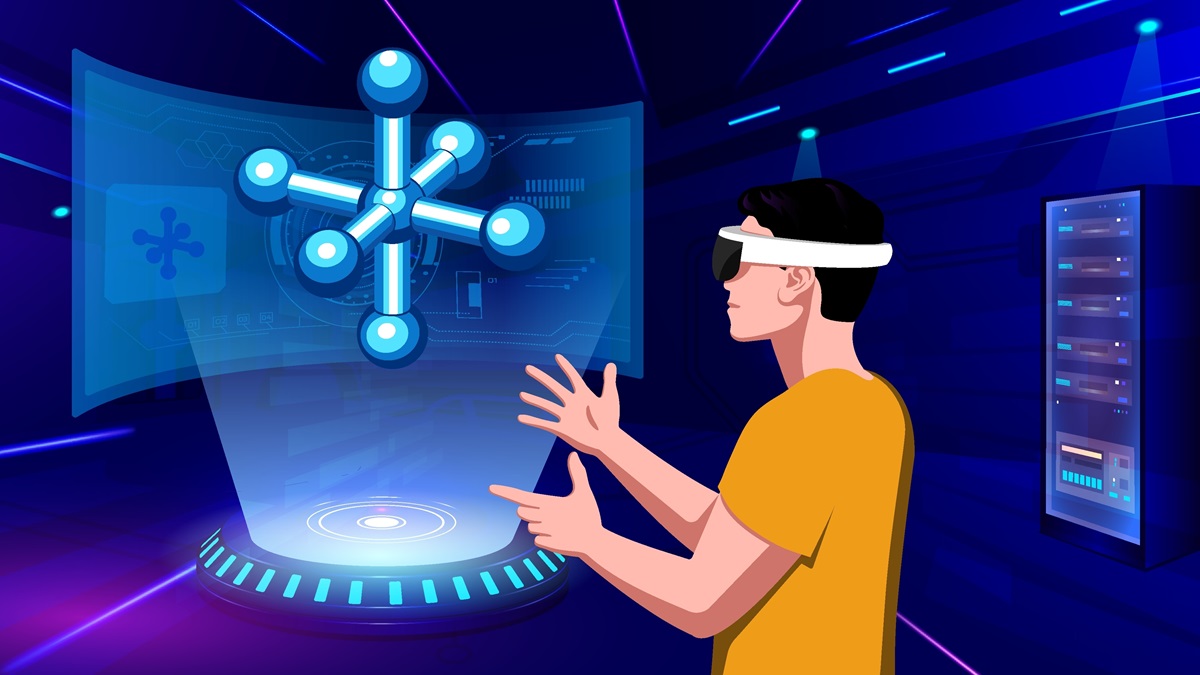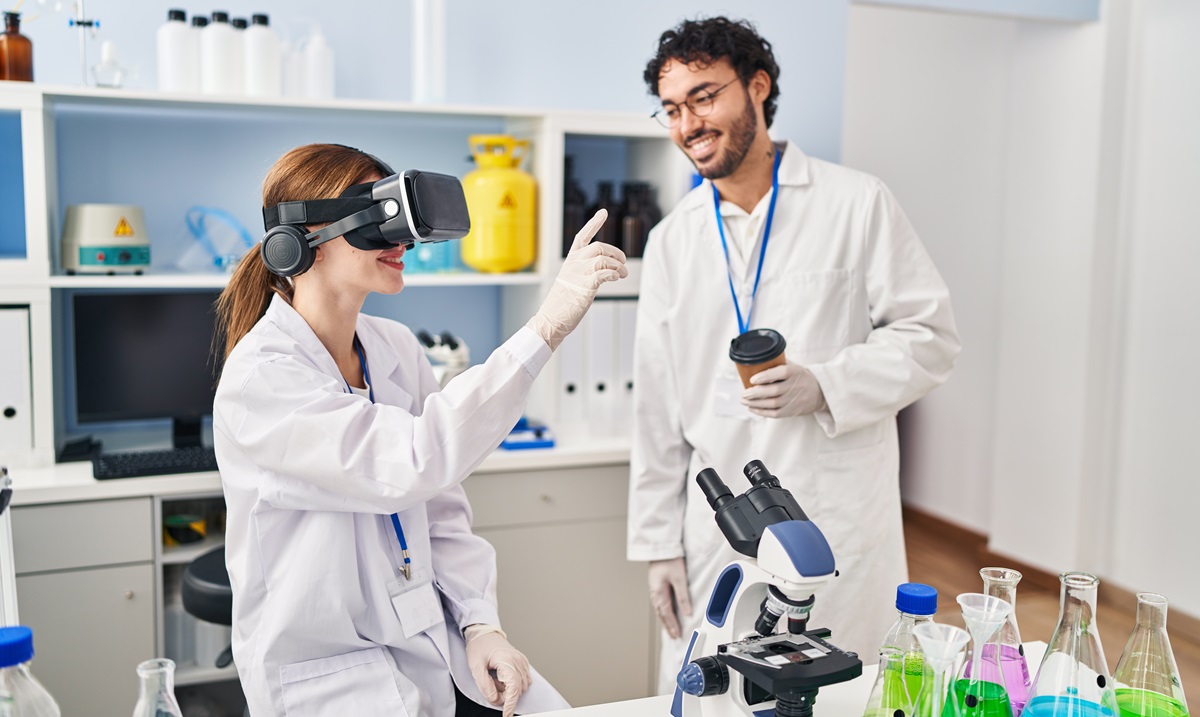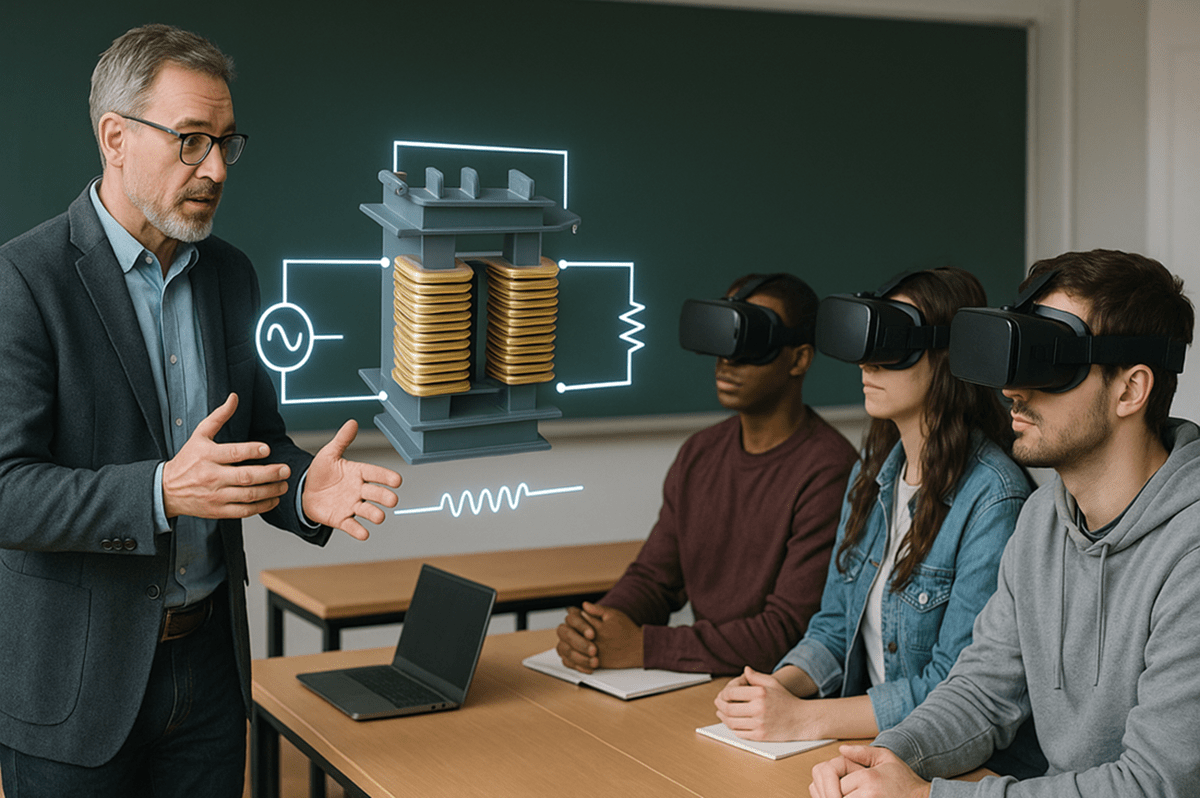A Virtual Journey through Organic Chemistry's Elimination Reactions

VR in education is not just about engineering or medical education. It has spread its arms to other subjects as well, and science, particularly organic chemistry, is one among them.
With the advent of organic chemistry virtual labs, students can now immerse themselves in realistic laboratory environments without the constraints of physical resources.
These virtual labs provide hands-on experience, allowing students to conduct experiments, explore reactions, and deepen their understanding of organic chemistry concepts in an engaging and interactive manner.
Students often consider it as one of the tough subjects as it includes plenty of chemical reactions like elimination reactions that are hard to understand in textbooks.
Asking why?
Well, it can happen because of different mechanisms and generated products that follow a specific stereochemistry. Thus, making it difficult for educators to teach such complex reactions.
However, with the help of virtual reality in education, teachers can make this topic more approachable for the students.
Let’s explore some of the ways that make understanding organic chemistry’s elimination reaction easy for the learners in the blog below.
Organic Chemistry's Elimination Reactions in VR
Elimination reactions involve the removal of functional groups from molecules, which leads to the formation of multiple complex products through a series of intricate steps.
However, the traditional educational approach that uses textbooks or blackboards, struggles to convey these complexities of the reaction effectively to the students.
The spatial arrangement of atoms, the stereochemistry of the reaction, and the various possible outcomes can be overwhelming for students.
Thus, there is a requirement for three-dimensional visualization that textbooks often fail to provide. And, virtual reality learning technologies make this possible.
Here is how-
Breaking Barriers with VR Labs
Whenever we think of a chemistry classroom/lab, we always picture the students sitting in rows and a teacher addressing them. These students get knowledge from their teachers.
But what if, these students are transported into an elimination reaction virtual lab where they can interact with chemicals and molecules, witness reactions in real-time, and manipulate chemical structures with their own hands?
In such a scenario the results will be different. The students not only learn about chemical reactions, but they are experiencing them firsthand. And, virtual reality labs for elimination reactions can turn this thought into reality.
It provides students with an immersive learning experience that breaks the limits of traditional classroom setups.
With VR education, students can visualize the complete process, from the initial substrate to the formation of products in a few clicks. By wearing the VR headsets, they can explore the molecular world in three dimensions.
Thus, gaining an understanding of how the molecules arrange themselves along with knowing the stereochemistry that is involved in elimination reactions.
Interactivity at its Best
The traditional educational approach used in the classrooms has always focused on educators rather than the students. With this approach, students can only learn and gain knowledge about the elimination reaction passively, which is not sufficient.
With the introduction of virtual reality in education, the table has turned now.
Virtual reality learning technologies offer a level of interactivity that textbooks and conventional lectures cannot match. Students can actively participate in the reaction process, adjusting parameters, and observing how changes affect the outcome.
This hands-on approach develops a deeper comprehension of the subject matter among students.
Immersive Simulations
In the dedicated virtual reality lab for elimination reactions, students experience a transformative journey into the molecular world.
Through realistic simulations of chemical processes, whether involving the E1 or E2 mechanism, virtual reality provides an immersive platform for learners.
Unlike static textbook illustrations, students can actively engage with and observe elimination reactions up close.
The three-dimensional nature of virtual reality allows the students to explore the intricate details of molecular structures, fostering a deep understanding that transcends the limitations of traditional teaching methods.
This modern approach to education not only enhances comprehension but also sparks a sense of curiosity, making the complex world of organic chemistry more accessible and captivating for students.
Learning about the Real-world Applications
To make students learn about the complexities of the elimination reaction, educators must connect theory to real-world applications.
This is possible by exploring how elimination reactions are employed in drug synthesis. VR allows the students to enter the pharmaceutical elimination reaction learning laboratory, where the synthesis of life-saving drugs involves careful consideration of elimination reactions.
Here, they can witness the impact of organic chemistry on medical advancements and breakthroughs.
Not only this, but the students can also zoom out to the broader scope of organic chemistry's role in the petrochemical industry.
With the help of VR, the students can explore refineries and chemical plants, showcasing how elimination reactions are utilized in the production of various industrial chemicals.
Understanding these applications is crucial for aspiring chemists entering the professional landscape.
"Join us on an in-depth virtual exploration of elimination reactions in organic chemistry, where you'll gain a thorough understanding through interactive and visually stunning content—start learning today!"
Impact of Virtual Reality in Organic Chemistry Education

Complex subjects like complex subjects make it hard for educators to keep students engaged because of the traditional classroom setup.
In contrast to this, a virtual reality classroom offers an engaging and captivating environment that sparks curiosity among students. The novelty of exploring chemical reactions in a virtual space captures students' attention and sustains their interest throughout the learning process.
Moreover, the immersive nature of virtual reality learning translates to enhanced retention of information. When students actively participate in the learning process through virtual reality labs, they form stronger memory associations with the subject matter.
This, in turn, leads to a more profound and lasting understanding of organic chemistry's elimination reactions.
Overcoming Challenges with Virtual Reality Learning
The integration of virtual reality technology in education comes with a lot of benefits but we cannot forget about its challenges.
One among them is accessibility. Because of the digital divide students from different areas struggle in gaining education through VR.
However, with the advancements in virtual reality technology, accessibility is no longer a significant hurdle. Virtual reality headsets are becoming more affordable, making this innovative learning approach accessible to a broader range of educational institutions.
The democratization of virtual reality in education ensures that students, regardless of their location or resources, can benefit from immersive learning experiences.
Furthermore, the integration of VR into the existing curriculum is also a complex task in itself.
As virtual reality gains traction in education, the challenge lies in integrating these technologies seamlessly into existing curricula.
For this purpose, educators need to embrace the potential of virtual reality labs and incorporate them effectively into organic chemistry courses.
Collaboration between educators, technologists, and curriculum developers is essential to ensure a smooth transition to virtual reality-enhanced learning.
Conclusion
As we conclude our virtual journey through organic chemistry's elimination reactions, it's essential to envision the broader impact of VR on education.
The immersive and interactive nature of VR can completely change the way we teach and learn various subjects. Beyond elimination reactions, VR can be an impactful technology in disciplines ranging from physics to biology.
As we conclude our virtual journey through organic chemistry's elimination reactions, it's essential to envision the broader impact of Organic Chemistry Virtual Labs on education.


.png)
.png)

.png)